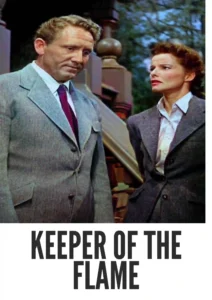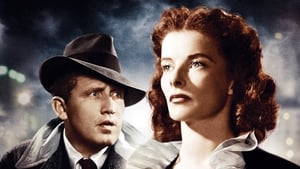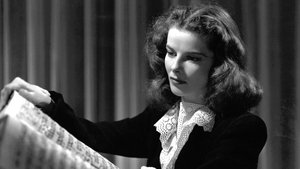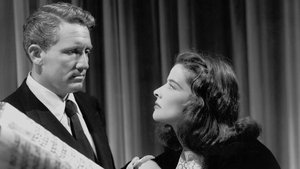Video Sources 0 Views

Synopsis

Delve into a world of post-war secrets with Keeper of the Flame, a compelling drama from 1943, meticulously colorized for a viewing experience that breathes new life into this classic. Starring the legendary Spencer Tracy and Katharine Hepburn, and directed by George Cukor, this film masterfully weaves together elements of mystery, romance, and social commentary. Perfect for enthusiasts of classic cinema and those captivated by powerful storytelling, this HD download unveils a poignant exploration of truth, legacy, and the hidden agendas of the wealthy elite. Though sometimes referred to simply as Flame, this timeless film will ignite your imagination.
Keeper of the Flame centers around the character of Steven O’Malley (Spencer Tracy), a war correspondent returning home to write a biography of the recently deceased Robert Forrest, a national hero. Upon arriving at the Forrest estate, he encounters Christine Forrest (Katharine Hepburn), the enigmatic widow of the celebrated figure.As O’Malley delves deeper into Forrest’s life, he begins to uncover inconsistencies and hidden truths that challenge the idealized image of the man. Christine, initially aloof and guarded, gradually becomes O’Malley’s ally as they navigate a web of secrets, deceit, and political intrigue. Their investigation leads them to question the true nature of Forrest’s legacy and the motives of those who seek to control it. The film builds to a dramatic climax where the shocking truth about Robert Forrest is revealed, forcing O’Malley and Christine to confront the dark underbelly of power and influence. Keeper of the Flame explores themes of idealism, disillusionment, and the price of uncovering uncomfortable truths in a society eager to embrace its heroes.
The film boasts a stellar cast, bringing depth and nuance to the intricate narrative:
- Spencer Tracy as Steven O’Malley
- Katharine Hepburn as Christine Forrest
- Margaret Wycherly as Mrs. Forrest
- Donald Meek as Mr. Griggs
- Richard Whorf as Clive Kerndon
Keeper of the Flame expertly blends elements of courtroom drama, mystery, and social commentary, making it a standout film within the broader category of classic drama. Its suspenseful plot and thought-provoking themes resonate with audiences interested in stories that challenge societal norms and explore the complexities of human nature.
Released in 1943, during the height of World War II, Keeper of the Flame reflects the anxieties and uncertainties of a nation grappling with its identity and values. The film subtly critiques the potential for manipulation and the dangers of blindly following charismatic figures, themes that resonated deeply with audiences of the time. It also touches on issues of wealth inequality and the responsibilities of the powerful, reflecting the social consciousness that was emerging in American society during the war years. Keeper of the Flame stands as a powerful commentary on American ideals and the importance of vigilance in preserving democracy.
This colorized edition of Keeper of the Flame has been meticulously restored, employing state-of-the-art digital techniques to enrich the visual experience while preserving the film’s original atmosphere and emotional depth. The colorization process involved a detailed analysis of the original black and white footage, with careful attention paid to historical accuracy and aesthetic considerations. Sophisticated algorithms were used to select appropriate color palettes and enhance image details, resulting in a vibrant and immersive viewing experience. The colorization aims to enhance the storytelling and character nuances, making the film more accessible and engaging for contemporary audiences. While debates about colorizing classic films persist, this version seeks to honor the original artistic vision while introducing it to a new generation of viewers.
- : George Cukor
- : Donald Ogden Stewart
- : the novel by I.A.R. Wylie
- : William H. Daniels
- : James E. Newcom
- : Metro-Goldwyn-Mayer (MGM)
- : Metro-Goldwyn-Mayer (MGM)
- : 100 minutes
- : MP4
- : HD (1080p)
- : Compatible with a wide range of devices, including smartphones, tablets, computers, and smart TVs.
Keeper of the Flame (1943) has garnered attention for its compelling narrative, strong performances by Spencer Tracy and Katharine Hepburn, and its exploration of timely social and political themes. Critics have noted the film’s skillful direction, suspenseful plot, and its thought-provoking commentary on power, ideology, and the importance of questioning authority. Though opinions vary, Keeper of the Flame remains a significant work in the careers of its stars and director, and a valuable example of socially conscious filmmaking during the war years.
- : What is Keeper of the Flame about?
- A: Keeper of the Flame is a drama about a war correspondent who uncovers dark secrets surrounding a national hero’s legacy.
- : Is Keeper of the Flame (1943) a well-known film?
- A: While not as widely recognized as some of Tracy and Hepburn’s other collaborations, it is a notable film known for its social commentary and performances.
- : Is this version of Keeper of the Flame colorized?
- A: Yes, this version has been professionally colorized to enhance the viewing experience.
- : What makes Keeper of the Flame interesting for classic film fans?
- A: The film offers a compelling story, strong performances, and a thought-provoking exploration of social and political themes relevant to its time.
- : What is the download format?
- A: The download format is MP4, ensuring compatibility with most devices.
- : What resolution is the download?
- A: The resolution is HD (1080p), providing a high-quality viewing experience.
Experience Keeper of the Flame Today!


















